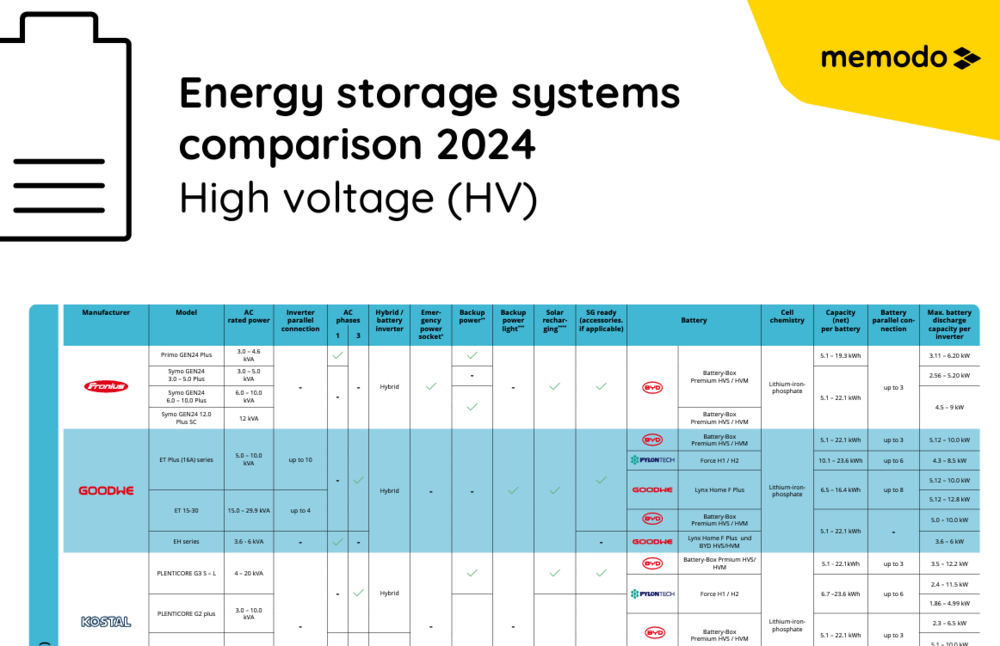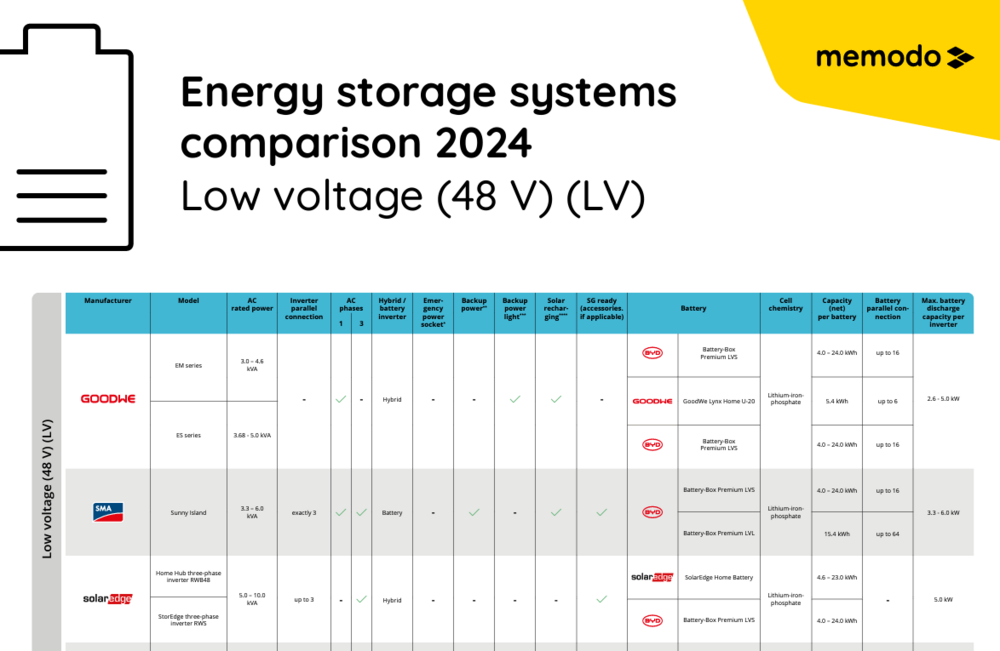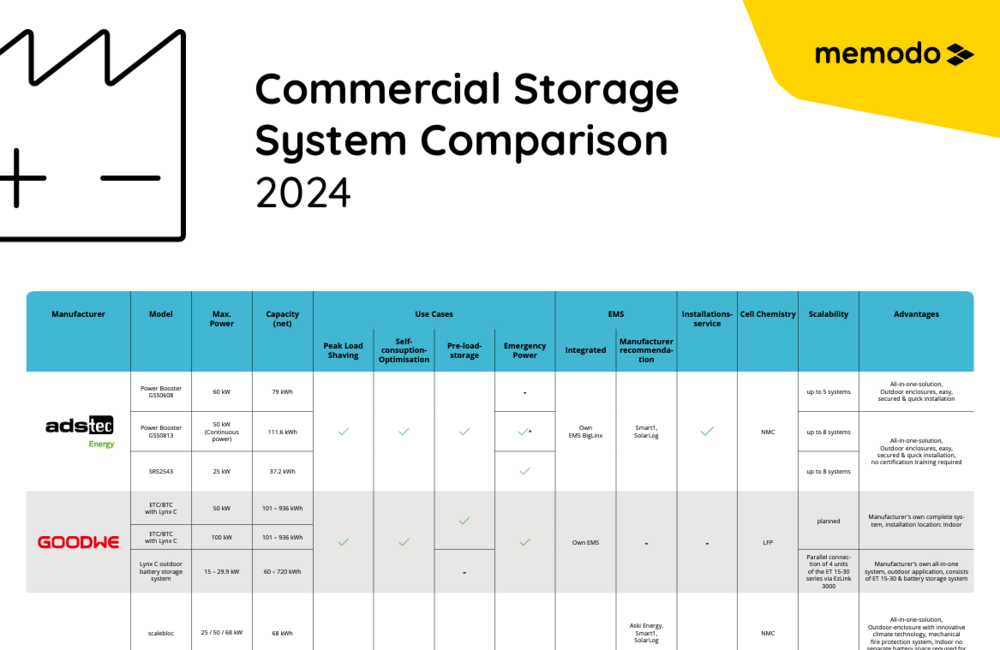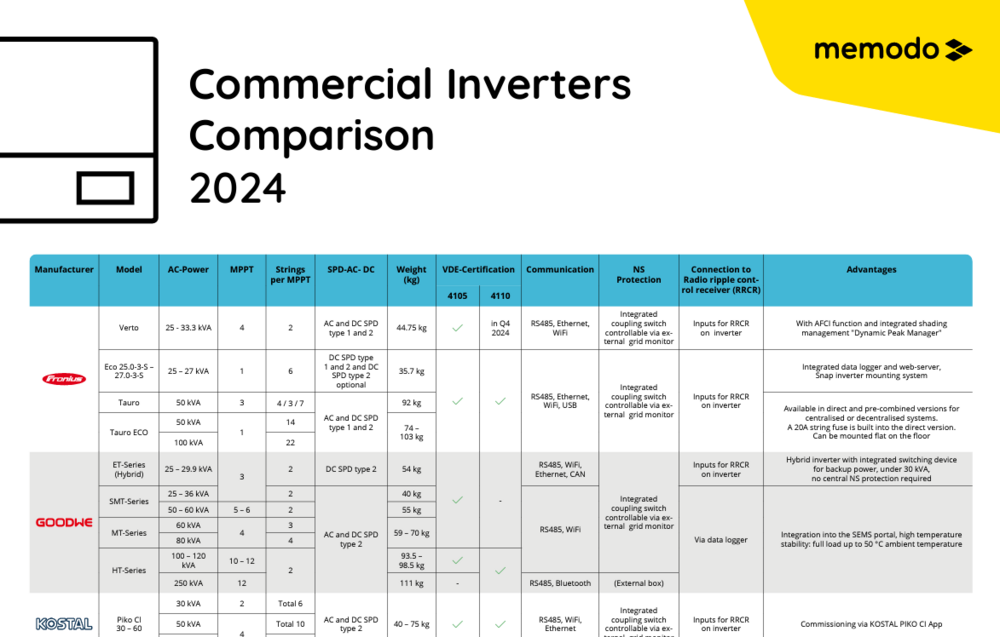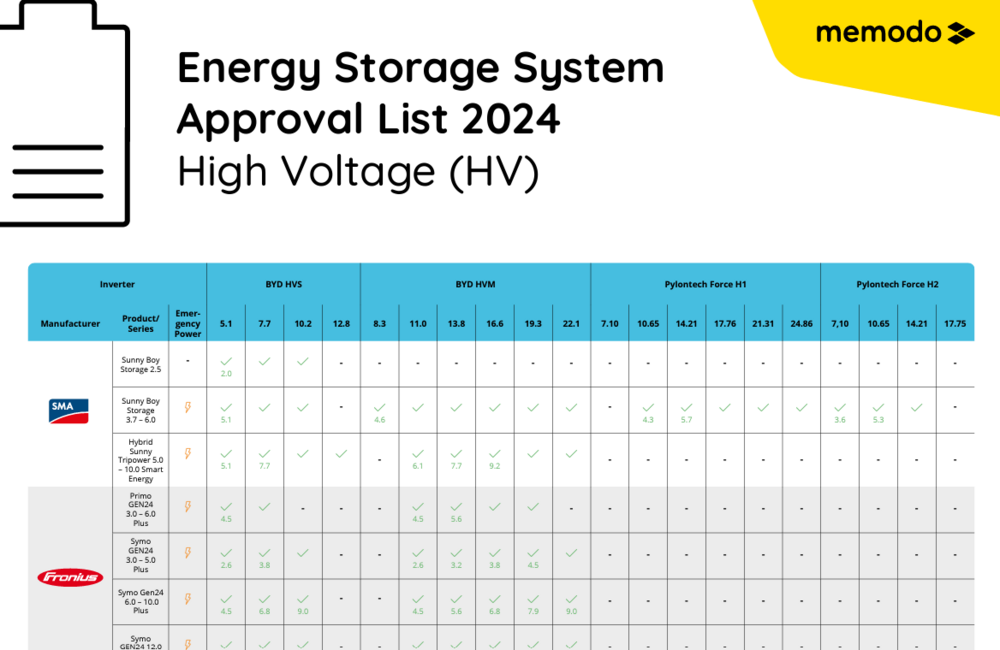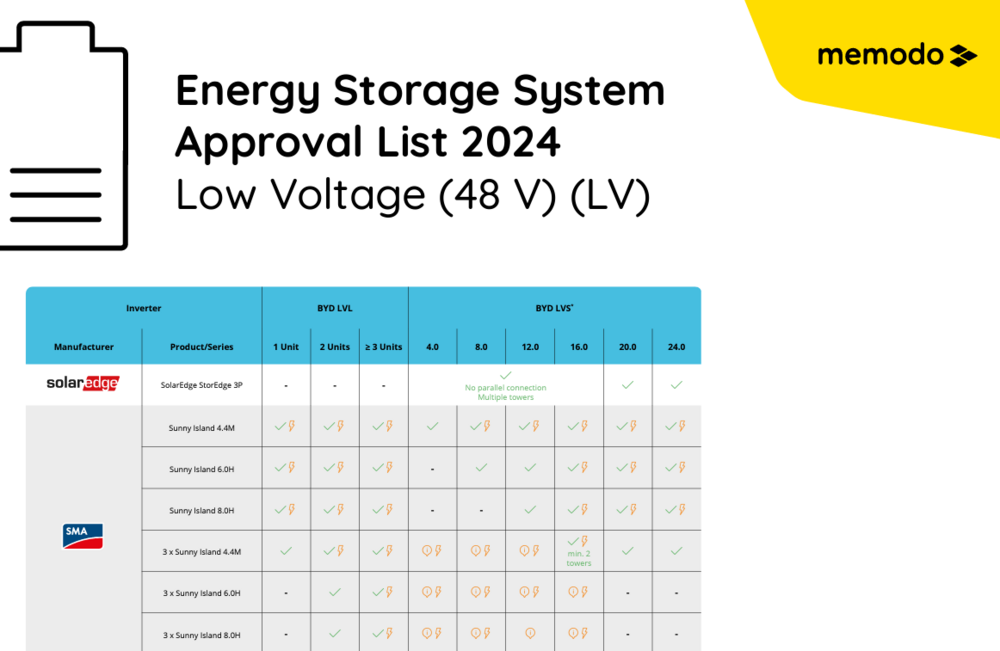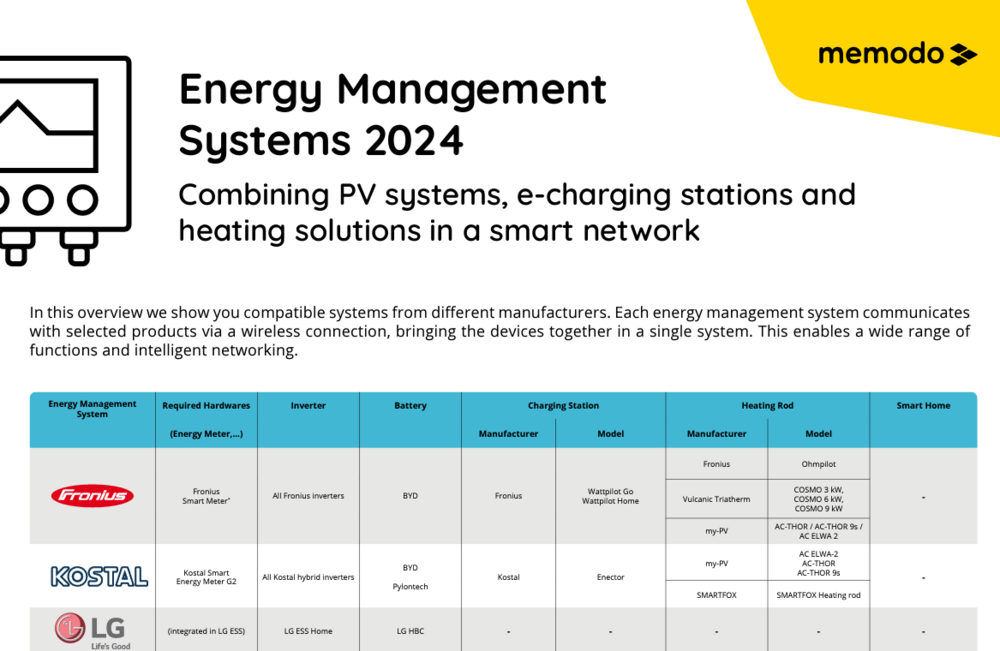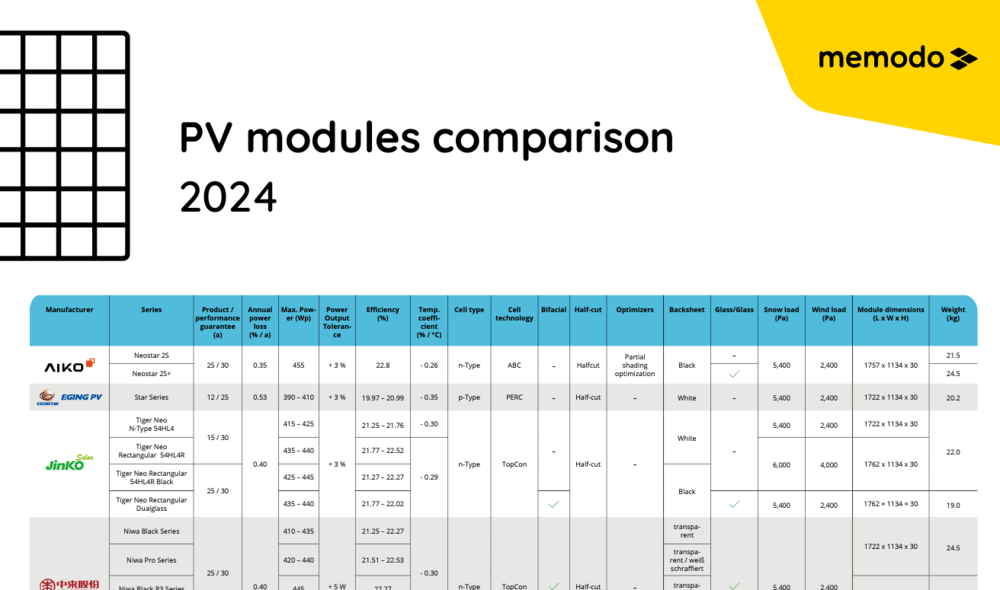Memodo Comparisons & Product Approval Lists
Our “High-voltage energy storage system comparison” provides an overview of all the high voltage energy storage systems available in our product range. Key figures and features are compared. High voltage batteries have voltages above 50 V and up to 100 V. In order to increase the storage capacity of high voltage batteries, several devices can be connected in series. Some manufacturers offer stackable batteries for this purpose. In addition, high-voltage storage systems have higher charging and discharging capacities, enabling them to store or release PV energy quickly when needed.
Our "Low voltage energy storage comparison" compares 48V energy storage systems and helps you find the right low voltage device. A low voltage energy storage system is an easy way for you to increase your self-consumption of the solar electricity generated by your PV system. You can also increase the capacity of a low-voltage energy storage system by simply connecting several 48V batteries in parallel. Some low-voltage battery manufacturers offer systems that are easily stackable.
Are you looking for self-consumption optimisation, peak shaving or EV charging stations? Our commercial energy storage systems offer a tailored solution for a wide range of customer requirements. The comparison provides you an overview of the performance data and helps you to make a pre-selection.
Would you like to compare the most suitable commercial inverters with each other? Our commercial inverter comparison tool gives you a clear decision-making aid to help you find the right inverter for your needs.
Especially with high voltage energy storage systems, the maximum charge/discharge current of the inverter is often lower than that of the battery. This may result in reduced DC power, but we will indicate this in the relevant combinations. In high-voltage systems, emergency/backup power operation is usually only dependent on the inverter.
For 48V systems, the focus is on back-up/emergency power. Certain inverters are often already approved for self-consumption optimisation with smaller battery capacities. However, this is not the case for back-up/emergency operation. In general, the higher the inverter power, the higher the battery capacity should be. In our 48V approval list, we show you which and how many batteries you need for each inverter. We also explain how to operate the combinations in backup/emergency power mode.
Which wallbox / charging station is right for you?
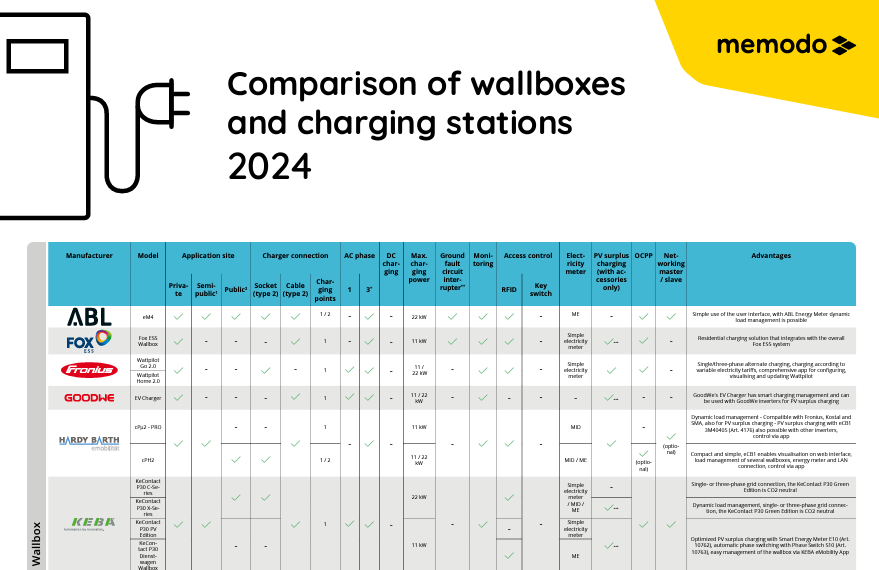
Update: 01.08.2024
Looking for a wallbox or charging station? Our wallbox and charging station comparison will help you choose the right charging station. We compare wallboxes and charging stations from top manufacturers such as EVBox, Fronius, GoodWe, Kostal, Hardy Barth, SMA, Sungrow, ABL, Mennekes, E3/DC, EnerCharge, SolarEdge, Wallbox and KEBA.
An energy management system (EMS) in the home connects and controls different energy sources and consumers on the grid. This enables owners of PV systems in particular to make better use of the energy available and increase the degree of self-sufficiency. The EMS monitors energy flows and regulates energy production according to the needs of each energy consumer.
Power, efficiency, warranty period, cell technology, backsheet colour and so on - you have a lot of choices when it comes to solar panels. That's why we've created the Memodo Solar Module Comparison. It gives you an overview of our PV module range and compares all the important features and specifications of the PV modules. So you can find the best solar module for your project in no time at all.
